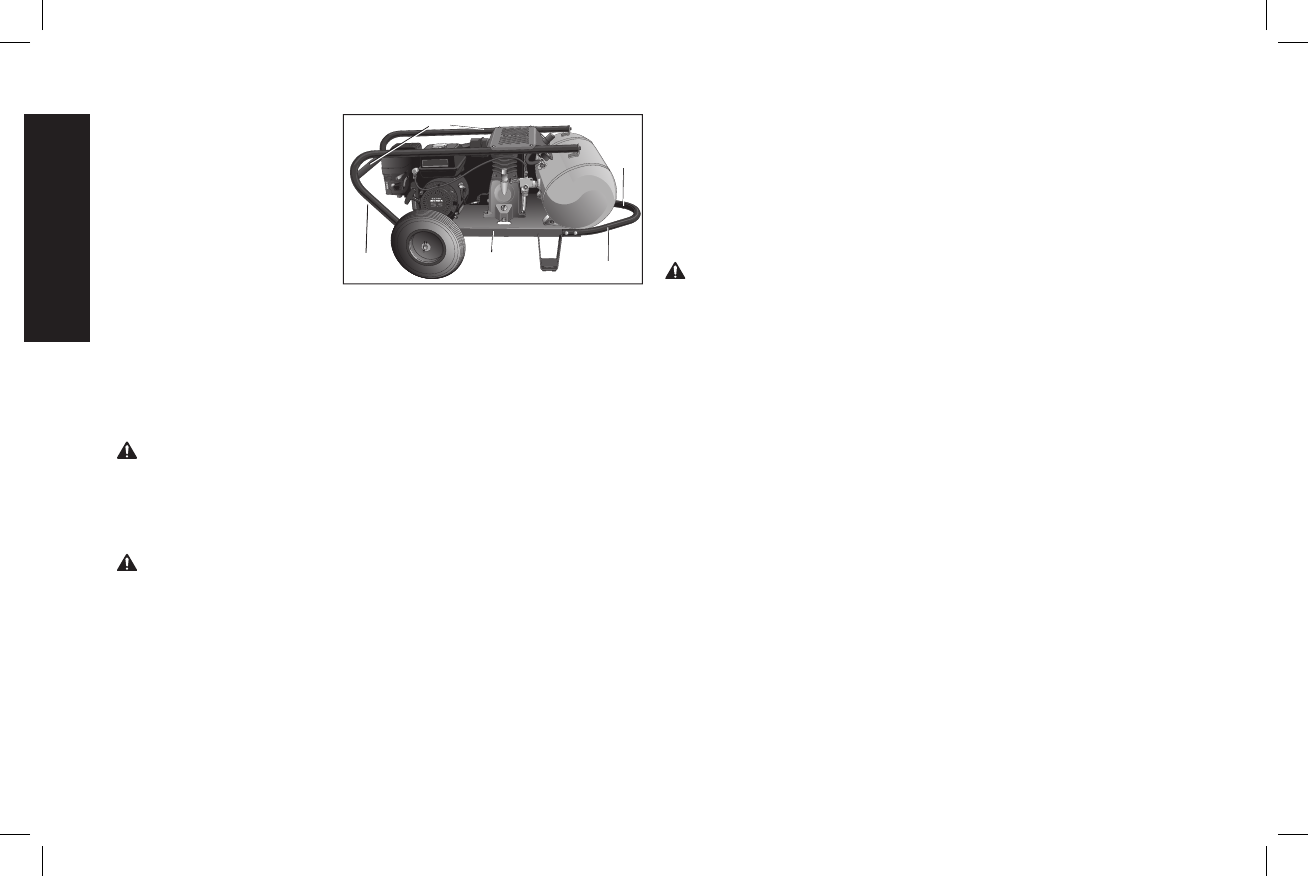
12
English
When transporting the com-
S
R,S
P
R,S
R
pressor in a vehicle, trailer,
etc. ensure that the air tank
is drained and the unit is
secured and placed on a flat
horizontal surface. Do not
transport in a standing
position. NOTE: Use
recommended tie down
points (R) when transporting. Use care when driving so to avoid
tipping the unit over in the vehicle. Damage can occur to the unit or
surrounding items if unit is tipped. Use a ramp if loading or unloading
the unit from a height of more than 12" (304.8 mm).
LIFTING
Always use two people when lifting and lift from the recommended
lift points (S).
WARNING: Risk injury from lifting. Unit weighs more than 160 lbs.
(72.6 kg) Do not move or lift without assistance.
MOVING
1. Grasp handle (P) of compressor, and lift compressor high
enough so unit can be rolled on the front tires.
WARNING: Risk of unsafe operation. Ensure proper footing and
use caution when rolling compressor so that unit does not tip or
cause loss of balance.
2. When location is reached slowly lower rear of compressor to
ground. Always store compressor in a horizontal position. NOTE:
Do not store in a standing position.
NOTE: Should the unit tip over, hard starting and smoking will occur
due to oil spillage.
General Requirements
The piping, fittings, receiver tank, etc. must be certified safe for at
least the maximum working pressure of the unit. Use hard welded or
threaded steel or copper pipes, cast iron fittings and hoses that are
certified safe for the units discharge pressure and temperature. Use
pipe thread sealant on all threads, and tighten joints thoroughly to
prevent air leaks. DO NOT USE PVC PLASTIC.
WARNING: Risk of bursting. Plastic or PVC pipe is not designed
for use with compressed air. Regardless of its indicated pressure
rating, plastic pipe can burst from air pressure. Use only metal pipe
for air distribution.
CONDENSATE DISCHARGE PIPING
If installing a condensate discharge line, the piping must be at least
one size larger than the connection, as short and direct as possible,
secured tightly and routed to a suitable drain point. Condensate must
be disposed of in accordance with local, state and federal laws and
regulations.
NOTE: All compressed air systems generate condensate that
accumulates in any drain point (e.g., tank, filter, aftercoolers, dryers).
This condensate contains oil and/or substances which may be
regulated and must be disposed of in accordance with local, state,
and federal laws and regulations.
PREPARATION FOR USE
Pre-Start Checklist
1. Ensure engine ON/OFF switch (C) is in the OFF Position.
2. Ensure air tank is drained, see Draining Air Tank under
Maintenance.
3. Ensure the drain valve (J) is closed.
4. Ensure safety valve (I) is functioning properly, see Checking
Safety Valve under Maintenance.


















